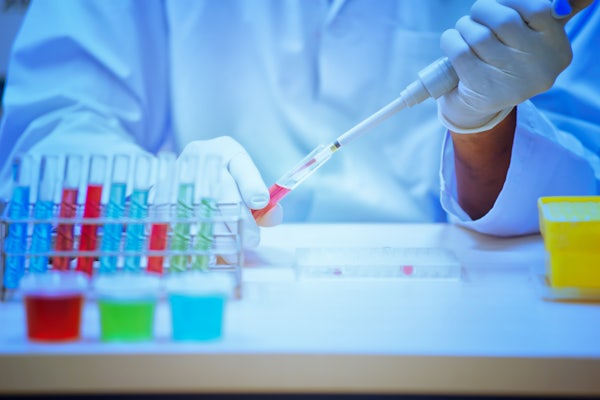A design of experiments approach to precision vaccine adjuvants
Jai Rudra to develop new combination adjuvants using engineered nanomaterials and accepted immune adjuvants

Adjuvants are added to vaccines to improve protection, extend the duration of protection and reduce the dose or number of boosters required. As vaccines are increasingly in demand for a growing variety of diseases and populations, vaccine developers are turning to combination adjuvants, which often work together to stimulate and activate a variety of cells and immune mechanisms, to meet clinical needs.
Jai Rudra, associate professor of biomedical engineering in the McKelvey School of Engineering at Washington University in St. Louis, won a four-year, $2 million award from the National Institute of Allergy and Infectious Diseases, part of the National Institutes of Health (NIH), to support his lab’s research on mechanisms of nanomaterials-based combination adjuvants.
Rudra’s lab specializes in designing biomaterials for vaccine development and immunotherapy and has previously developed adjuvants based on synthetic nanomaterials, which act via mechanisms distinct from adjuvants extracted from microbes. With NIH support, Rudra plans to develop new combination adjuvants by combining engineered nanomaterials and immune adjuvants approved for human use or under development in the vaccine pipeline.
“Adjuvant research is an integral part of vaccine development and has been influenced by the emerging field of immunoengineering,” Rudra said. “With this grant, my team and I are excited to apply principles of design of experiments to identify optimal adjuvant combinations to develop safe and effective vaccines.”
Rather than combining adjuvants using a trial-and-error approach, the Rudra lab will employ a design of experiments (DOE) approach. DOE is a branch of applied statistics concerned with designing and analyzing controlled tests to explain experimental variations under specific conditions. In this study, Rudra will systematically vary the concentrations of multiple active components in adjuvants to achieve optimal function.
“Multiple industries have been transformed by the use of DOE experimental approaches,” Rudra said. “Applying DOE to vaccine development will enable the statistical comparison of how each adjuvant affects immune cell activation and vaccine efficacy individually and in combination for the development of optimal adjuvant formulations.”
Optimal vaccine and adjuvant formulations are especially important for high-risk groups, such as elderly or immunocompromised individuals, but Rudra notes that this work benefits all who receive vaccinations.
“By determining how different combinations of adjuvants affect the immune response, we can reveal critical interactions that are often missed when mixing adjuvants ad hoc or using trial and error,” Rudra said. “Careful selection of adjuvant combinations will result in complementary and even synergistic enhancement of immune responses to vaccines while minimizing negative effects such as toxicity.”
Rudra’s new project builds on earlier NIH-funded collaborative research to develop and test a novel nanofiber material to eliminate the use of adjuvants that cause inflammation following vaccination, particularly in the elderly.




